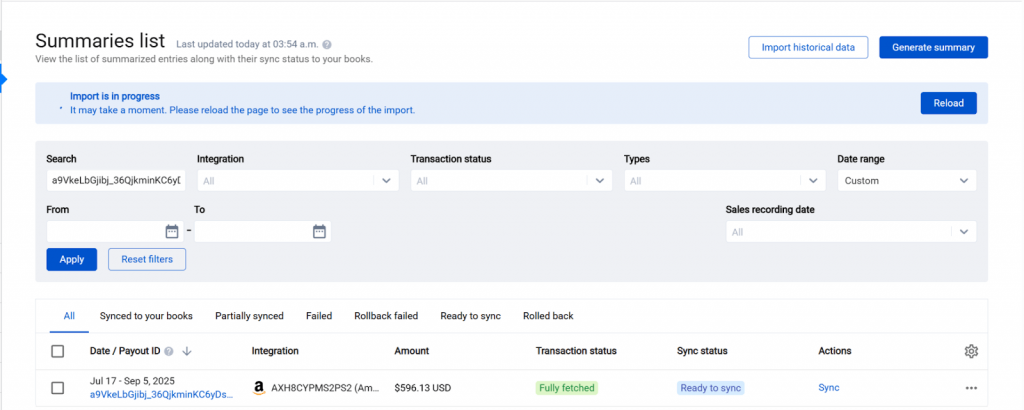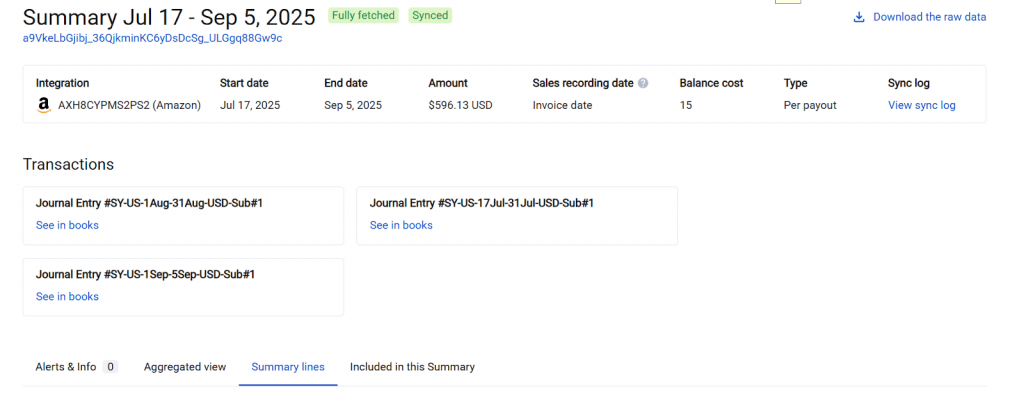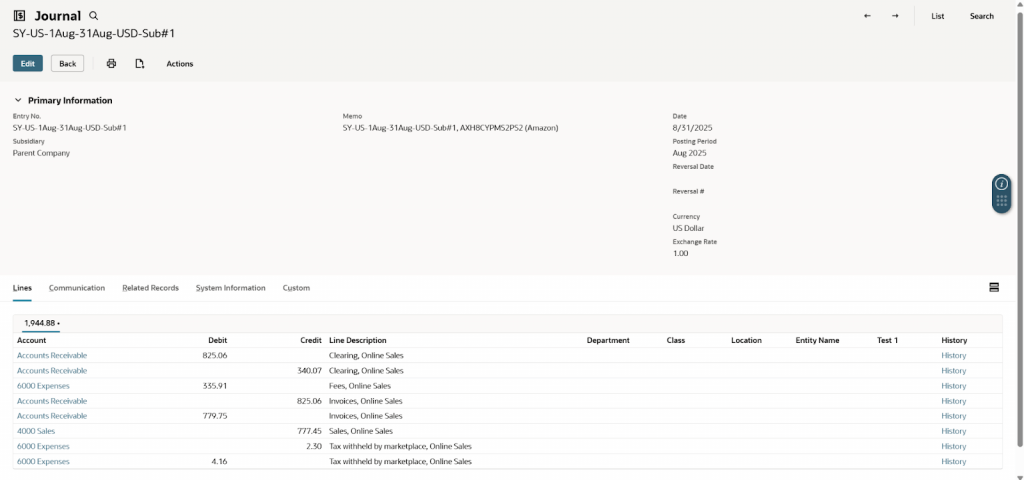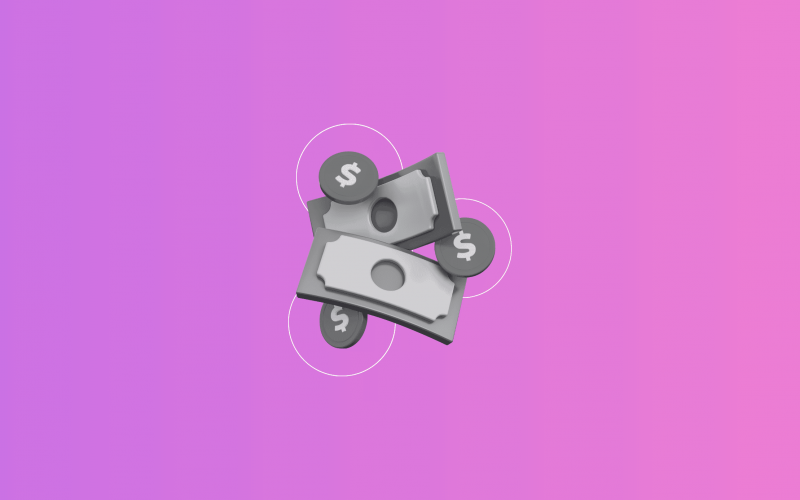Managing Amazon payouts in NetSuite can be challenging. Settlements bundle sales, fees, refunds, shipping, and adjustments into lump sums, making reconciliation difficult if done manually. Finance and operations teams often spend hours breaking these reports apart just to match a single deposit. The most reliable way to handle this is by using integration software like Synder, which automates the process and keeps your books accurate from day one.
The best way to sync Amazon settlements with NetSuite
You can bring Amazon settlements into NetSuite in a couple of ways: by uploading reports manually or by letting a tool like Synder do the heavy lifting. Both methods technically get the data in, but the experience is very different.
| Approach | How it works | Pros | Cons |
| Manual import | Download settlement reports from Amazon Seller Central, reformat CSV files, and upload them into NetSuite using built-in import tools. | No extra software required | Time-consuming, prone to errors, doesn’t scale with sales volume, requires ongoing maintenance |
| Using Synder | Connect Amazon and NetSuite once. Synder syncs sales, refunds, fees, shipping, and adjustments automatically as daily summaries. | Fast, accurate, scalable, supports multi-marketplace payouts, maps fees and taxes to the right accounts automatically | Requires setup (done once) |
With Synder, every Amazon deposit in your bank matches perfectly to what’s in NetSuite, broken down by sales, fees, and adjustments. That level of accuracy and automation just isn’t possible with manual uploads.
Syncing Amazon settlements in NetSuite with Synder
1. Connect Amazon and NetSuite to Synder
Create a Synder account and, during onboarding, connect both your Amazon Seller Central and accounting software.
Note: Synder for NetSuite operates only in the Summary Sync mode, you’ll always get settlement-level journal entries, not per-transaction posting.
2. Wait for settlement finalization (Synder ensures accuracy)
Once you connect Amazon and NetSuite to Synder during onboarding, the system automatically takes over. Each new Amazon sale enters the pipeline, but Synder waits until the settlement is finalized before creating the journal entry. This way, the integration not only links your platforms but also controls when and how transactions flow into NetSuite, ensuring accuracy from the very first payout.
In practice, this means:
- Synder waits for your bank to confirm that Amazon’s settlement transfer has been successfully received. Amazon will mark it as “Closed–Succeeded” once funds are deposited.
- Amazon’s settlement report isn’t generated instantly. It’s only available once the funds are confirmed. Synder uses that finalized report to import all fees and payouts accurately.
- For foreign currency settlements, Synder waits for the exchange rate to settle before syncing. This avoids inaccuracies in your books.
This “pending” hold ensures that nothing gets posted prematurely, keeping your financials clean and reliable.
3. Sync the settlement once it finalizes
When multiple settlements move from Pending to Synced, Synder creates a summarized journal entry in NetSuite that includes sales, refunds, fulfillment and FBA fees, shipping, taxes, and any adjustments.



4. Match Amazon deposits to NetSuite
Synder posts the summarized settlement entry into a clearing account, and once the actual deposit reaches your bank, NetSuite automatically matches it to that entry, ensuring a perfect tie-out.
Why this “Pending-then-sync” model matters for NetSuite users
| What could go wrong without it | What Synder does instead |
| Posting before bank finalizes → deposits missing or mismatched | Waits for bank confirmation before syncing |
| Syncing before settlement report is available → incomplete fee data | Waits for the completed settlement report |
| Using provisional exchange rates → inaccurate financials | Uses finalized rates before syncing |
With Synder, Amazon-NetSuite integration is simple to set up, accurate in every detail, and runs on its own once you’ve connected everything. See how it works in action: book a demo with Synder today.
FAQ
How do I import Amazon settlement reports into NetSuite automatically?
By connecting Amazon Seller Central and NetSuite through Synder, your settlement data flows into NetSuite without any manual uploads. Transactions are synced as summarized entries.
How should I map Amazon fees (referral, FBA/fulfillment, shipping labels) in NetSuite?
During setup, Synder lets you map each Amazon fee type to the right NetSuite expense account. This ensures referral fees, fulfillment costs, and shipping label charges are tracked properly in your books.
Can Synder handle FBA and multi-marketplace settlements?
Yes. Synder supports both FBA and merchant-fulfilled orders, as well as multiple Amazon marketplaces. All payouts are consolidated and reconciled seamlessly in NetSuite.
How far back can I import historical settlements?
Synder can pull in historical settlements as far back as Amazon allows. You’ll have a complete picture of past sales and payouts from day one. This feature is free on the Premium plan, included for 3 months on the Pro plan, and available as a paid option on the Basic and Essential plans.
Can Synder sync COGS & inventory between Amazon and NetSuite?
Yes. Synder can track COGS by syncing cost and inventory data tied to Amazon transactions, giving you a full view of profitability in NetSuite.






